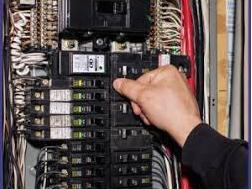Everything you wanted to know about your Kelowna Home Electrical System

Whether you are in the midst of purchasing a new home in the Kelowna area or you have been settled in your current property for a while now, what are the key things that everyone should know about their home’s electrical system?
Our modern society has an insatiable hunger for electrical power, and it is only set to grow. With Governments in North America focusing on net zero initiatives over the coming decades, more of our energy demands will absolutely be met with electricity. So, what do you need to know?
Your home’s electrical service is measured in Amps – that is the total capacity of electricity that your home can draw from the grid. The easiest way to understand the capacity (and limits) of your Kelowna home’s electrical service is by reading the label on the main breaker in the fuse panel. The main breaker is typically the largest “switch” in the panel and is separate from the other smaller “switches”. Its job is to limit the amount of electricity that enters the panel for distribution through your home. For several decades now, the minimum requirement for all new homes has been 100Amps. However, some older homes will still have 60Amp services. If you are purchasing an older home and the service is less than 100Amps, you will need to budget for an upgraded service. Even though the current homeowners may have been satisfied with less than 100Amps (based on lifestyle), a modern household will not be able to function will less than 100Amps. In fact, the new minimum standard is 125Amps and to be on the safe side, you may want to consider 200Amps – especially if you have plans for a shop or carriage home. As well, if you own an electric vehicle and require a home-based charging station, have plans on finishing a basement suite with separate laundry or have a large family, 100Amps will likely not be sufficient. When considering the costs associated with upgrading your Kelowna home’s electrical system, it is best to obtain the advice of a certified electrician. Depending on the neighbourhood, upgrading the electrical service such as overhead wires and transformer capacity may also need to be considered. If you do require an upgraded electrical service, you will be responsible for upgrading the infrastructure out to the supply point at the street if it is deemed necessary.
But before you run out and potentially spend thousands of dollars on a new service, try exploring the following tips:
- Need an EV charging station? You could try installing a switched system that allows you to “switch” from the 30Amp circuit supplying your dryer to the EV station. You will not be able to do laundry while the car charges, but if you can manage with some manual intervention, this is a satisfactory way to accomplish both.
- How about re-balancing? During construction, the electrical contractor will install circuits based on what the plans indicate are the intended uses of the rooms. However, as the use of the rooms evolve, you may have need for more power in one room vs another. Have an electrician measure the usage on the various circuits and advise if there is a more efficient distribution of power throughout the home.

